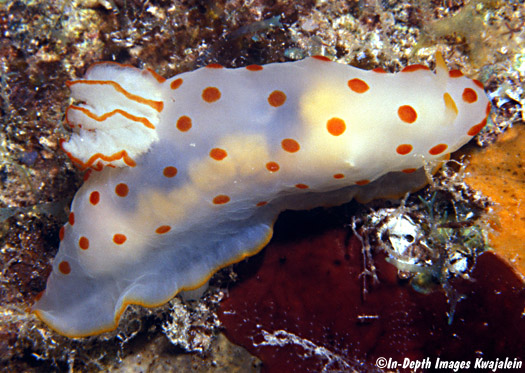
Gymnodoris ceylonica is sporadically common at Enewetak Atoll, Marshall Islands. There were not many different occasions when the nudibranchs were sighted, but some times there were a lot of them. The first seven specimens we ran across were on 20 September 1981 crawling up a sandy slope in a swift current next to the pier on Medren Island, not far from the Enewetak's deep water pass. Three days later off Enewetak Island itself, more than 80 specimens were counted at a depth of about 25 meters all crawling roughly northeast along the sandy bottom. If they continued on in the same direction, they would ultimately have gone up the slope to the shallow reef. The next time we ran across them was on 28 February 1982, when numerous specimens were observed off Medren Island at a depth of about 5 meters laying many tangles of egg masses on rocks and Halimeda algae. Over the next year and a half, we spotted an occasional other specimen in lagoon habitats, but never in the quantities observed in the first few sightings. Despite watching at Kwajalein for 28 years, we did not see it there. However, observations similar to ours at Enewetak were made by John and Lynette Flynn at Majuro and are described near the bottom of this page. Specimens measured ranged from about 25 to 80mm. Gymnodoris ceylonica was first reported in the Marshalls from Enewetak Atoll by Johnson & Boucher (1984).

Gymnodoris ceylonica eats Stylocheilus striatus (below), which it engulfs whole. We never saw it eating anything else, but it would be interesting to see if it eats other sea hares.
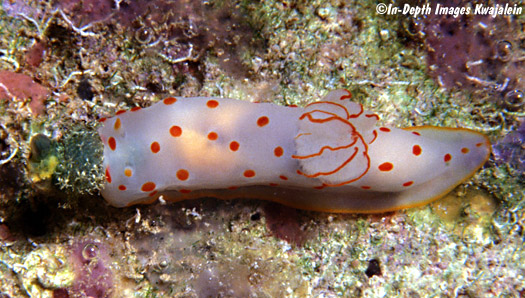
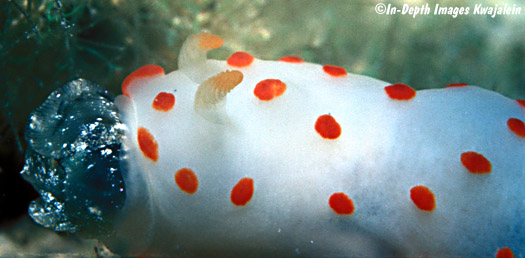
On some specimens, the gills seem disproportionately large, particularly during mating. The two below are starting to eject their reproductive organs in preparation for copulation.
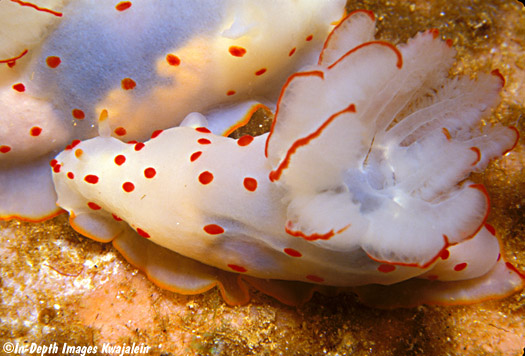
The two shots below show a mating pair of Gymnodoris ceylonica. Like other nudibranchs, these are simultaneous hermaphrodites, and during mating practice reciprocal fertilization.
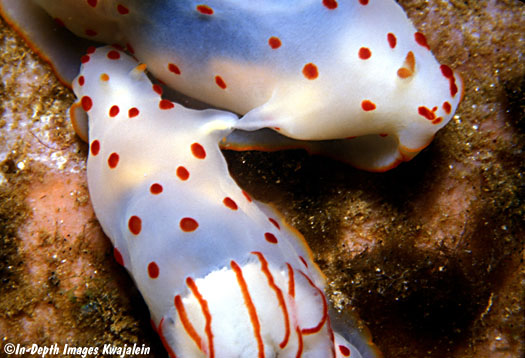
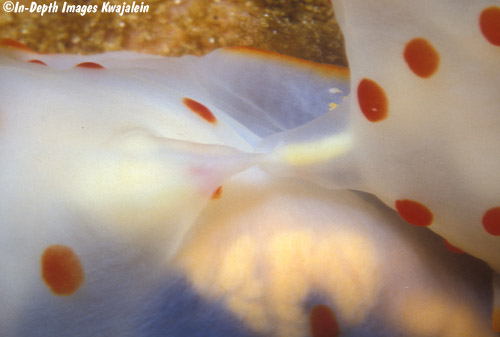
The specimen below was found and photographed by John and Lynette Flynn on an algae and sand bottom under moored boats at Enimonnit Island, Majuro Atoll, and numerous egg masses were also observed in the area. All our sightings of this species were at Enewetak Atoll at the northwest tip of the Marshalls, but the Majuro record indicates it is probably found throughout the Marshalls.
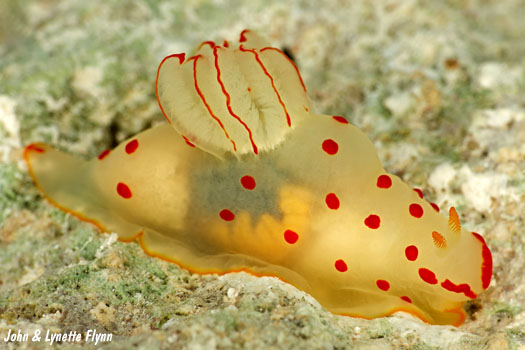
Following the above Majuro observations and around the full moon in May, 2021, John and Lynette reported "hundreds of them assembled in 0.5 to 4 m depth in the lee of a barrier island and in the adjacent cut between islands. Prior to this we have never seen G. ceylonica in this location. They are out in the open and also under rocks in the day. They are mating and laying eggs everywhere." They also reported large numbers of the nudibranchs' prey Stylocheilus striatus in the area. The three photos below illustrate a few specimens from this large aggregation. The first one is feeding on a Stylocheilus, causing the prey to release its purple ink.
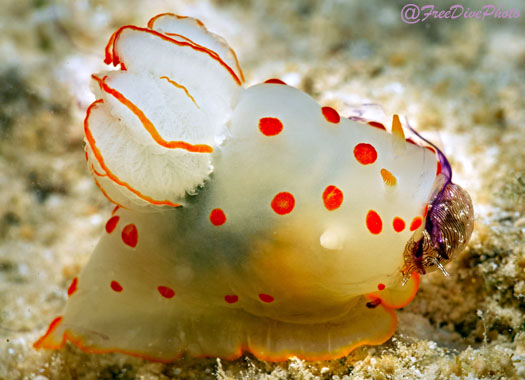
A pair in the process of mating, where the organs for transferring sperm in both directions can be seen through the semi-transparent body.
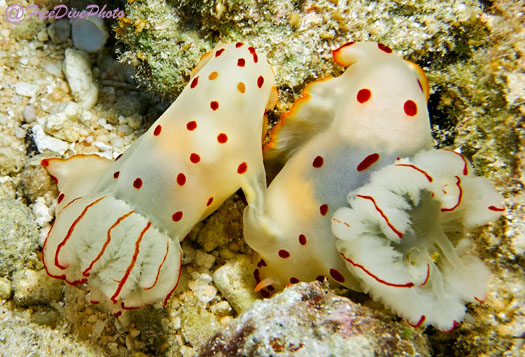
Laying strings of orange eggs in the algae in shallow water. You can actually see the eggs coming out of the nudibranch's reproductive opening.
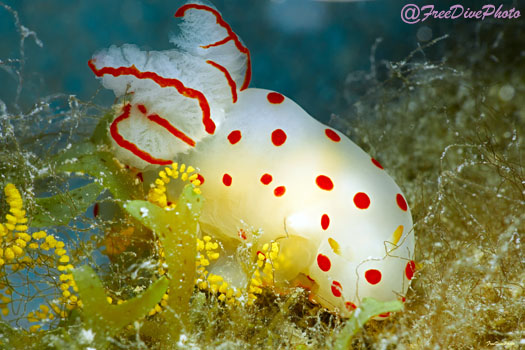
Created 1 January 2007
Updated 3 June 2021